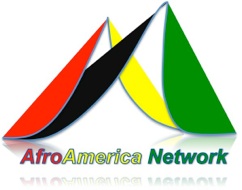Our Part 1 on Wikileaks cables allegedly from the US Embassy in Kinshasa describe the position of the US Embassy on the Kisangani process and its somewhat guarded support. Over the year 2008, Rwandan rebels based in the Democratic Republic of the Congo (DRC) had engaged in negotiations with the DRC government with the facilitation of the the Rome-based Catholic Organization Sant’Egidio Community and the Norwegian SIK. The rebel organizations involved included the mostly Hutu Rally for Unity and Democracy (RUD-Urunana) and the mostly Tutsi Rally for the Rwandan People (RPR), led mainly by former Rwandan Patriotic Army (RPA) officers.
The Wikileaks cable in our Part 1 focuses on what is known as “Kisangani Roadmap” publication ceremony that was “well attended by attended by GDRC and international figures. Interior Minister Kalume represented President Kabila at the meeting; other GDRC notables in attendance included Defense Minister Chikez and Presidential Special Envoy Seraphin Ngwej. SRSG Doss was present; EU Special Representative Roeland van de Geer sent his political counselor Jean-Michel Dumont. Representatives from the embassies of France, Belgium, South Africa, Sweden, Italy, Russia, and China, and from the community of Sant’Egidio were in attendance as well.”
Two months later, the disarmament ceremony planned in the Kisangani RoadMap was held in Eastern DRC, the Kivu town of Kasiki on July 31, 2008. The ceremony is the focus of this cable with the subject: GRDC receives surrender July 31 of RUD soldiers.
As mentioned in the first cable, the US Embassy was following the process and this time, while dropping the FDLR prefix, hence apparently recognizing RUD and RPR as independent organizations, commented:
“The recent surrender of 67 Rassemblement pour l’Unit et la Democratie (RUD) soldiers in a public ceremony in North Kivu on July 31 was a small but potentially significant victory for DDRRR. The ceremony took place in the vicinity of Luofu in Lubero district.
In attendance were the DRC Minister of Foreign Affairs and the Deputy Ministers of Interior and Defense. Invited guests included the Joint Monitoring Group (JMG) Task Force and a large press corps. Rwanda was represented though its JMG members. A high level invitation had been sent to Kigali by the DRC Ministry of Foreign Affairs, but no senior Rwandan officials accepted it. U.S. members of the Task Force attended as part of the JMG delegation.”
If the Wikileaks cables are true, the US Embassy appeared to laud the initiative by RUD-Urunana and RPR leaders but indicated that the Rwandan government resistance could become a major obstacle:
“2. (SBU) Among those who gave speeches were RUD commander General Musare and Executive Secretary Felicien Kanyamubwa, who had been flown to Congo from New Jersey at the GDRC’s expense. Musare and Kanyamubwa did not hesitate to criticize Rwandan President Paul Kagame for the plight of RUD soldiers who, they said, had been falsely accused of being killers and rapists. They called on Kagame to give safety guarantees to RUD fighters and to open an inter-Rwandan dialogue, all old demands. According to the speakers,the ball was now in Rwanda’s court. The Congolese Foreign Minister, Antipas Mbusa, gave the final speech, clearly enjoying himself in front of about 15 journal ists and some 500 villagers. He used the opportunity to praise the DRC’s willingness to work in partnership with Rwanda and to point to President Kabila’s deep concern for the Kivus. He told the combatants that they would be given certain options, but that returning to Rwanda was the best solution. (Note: This is clearly the main objective of the DDRRR program, but the Rwandans present after the ceremony expressed concern that the combatants remaining in the DRC would simply move somewhere nearby, meaning they could regroup later.)”
The cables also indicated that the negotiations had started on January 24, 2008 in Kinshasa and involved the DRC government, MONUC, and RUD:
“3. (SBU) Though MONUC’s DDRRR office was involved from the beginning in the RUD-GDRC negotiations that started on January 24, 2008, the final financial breakthrough to make the event happen came from a private Congolese businessman with ties to the Foreign Minister. In one month he had organized the construction of the demobilization camp – including separate quarters for single and married soldiers as well as the bleachers for the ceremony.”




Comments on this entry are closed.
Very nice, i suggest webmaster can set up a forum, so that we can talk and communicate.